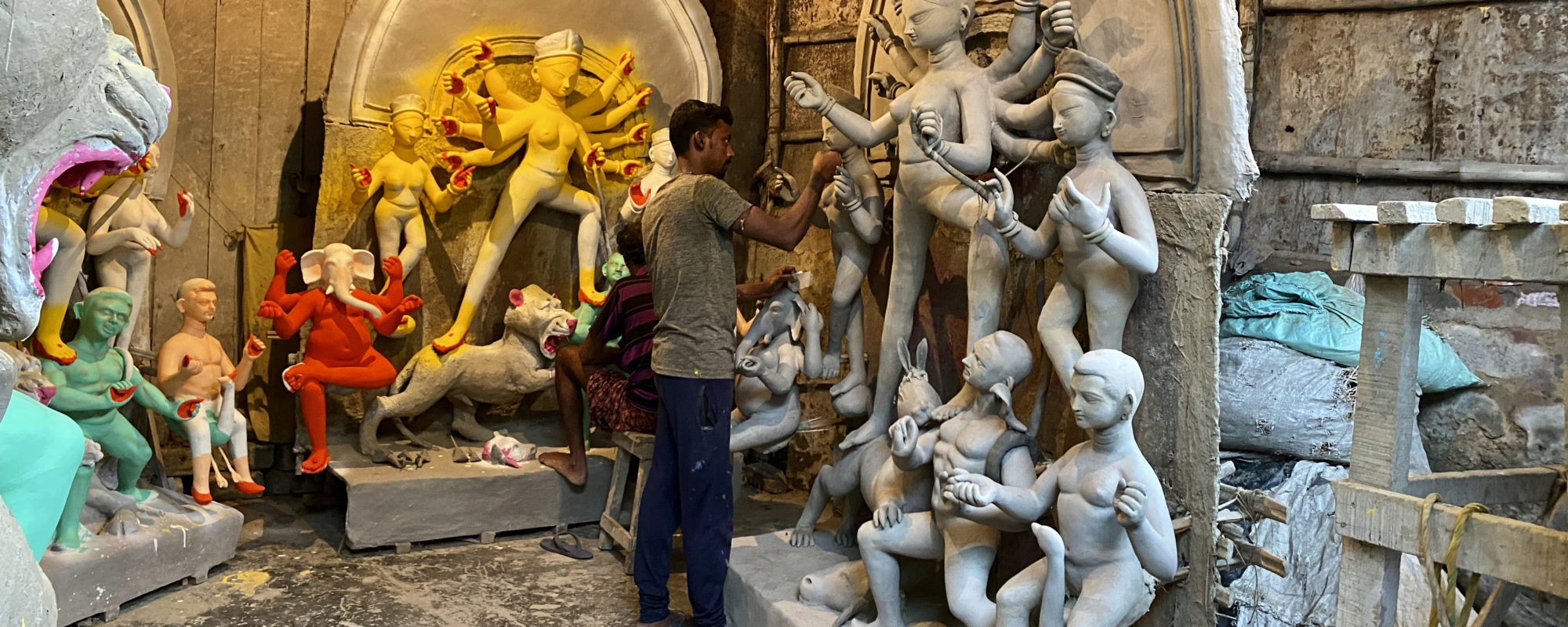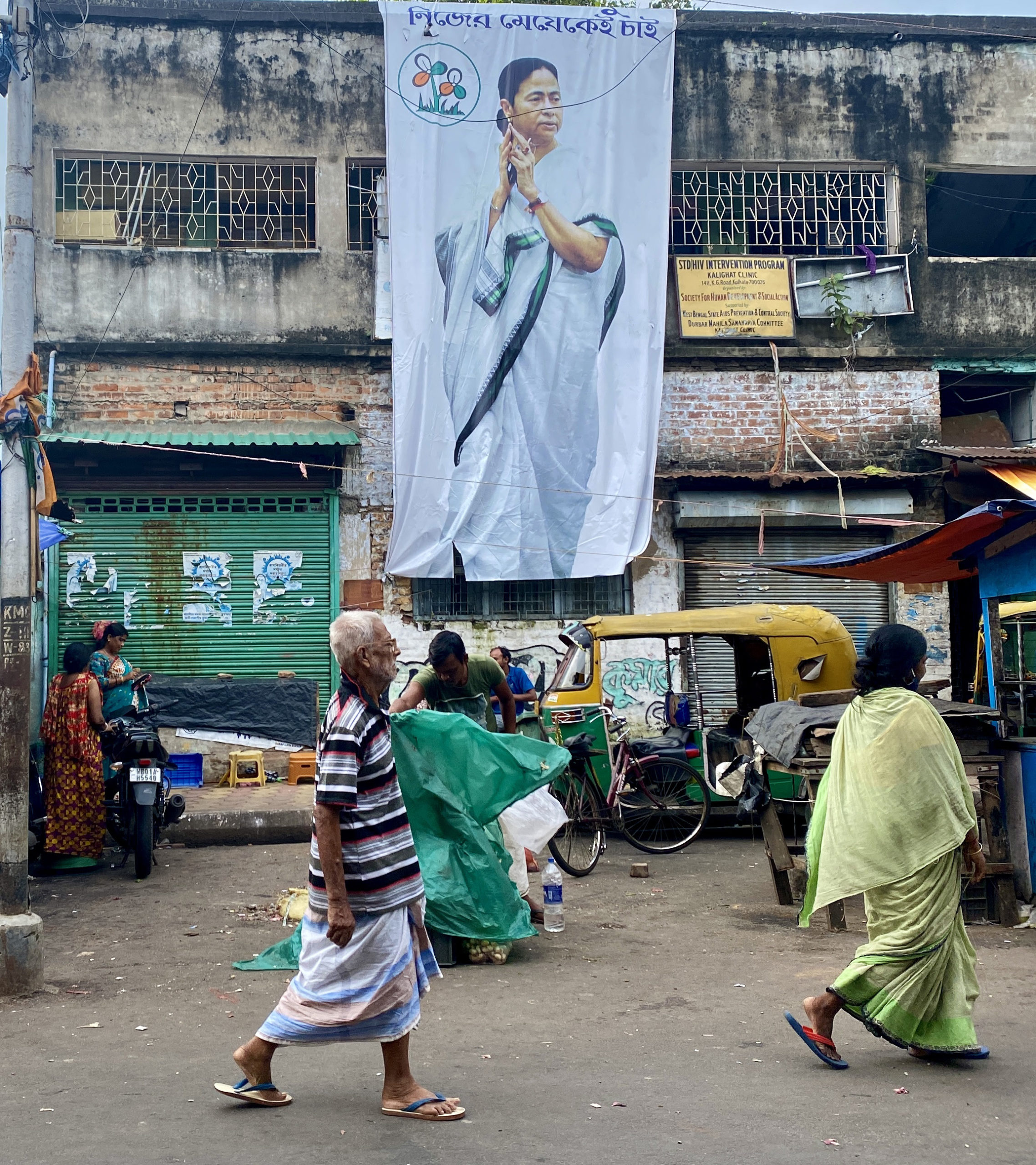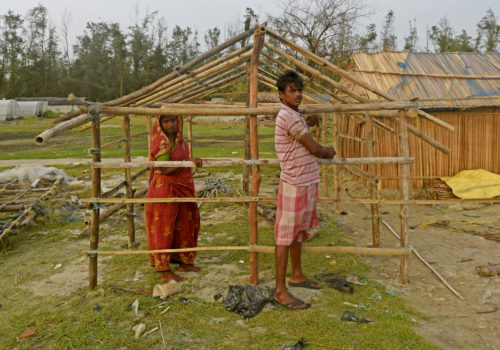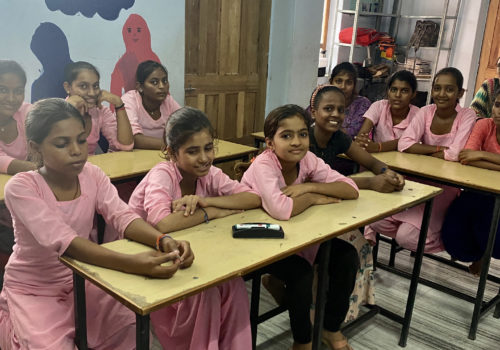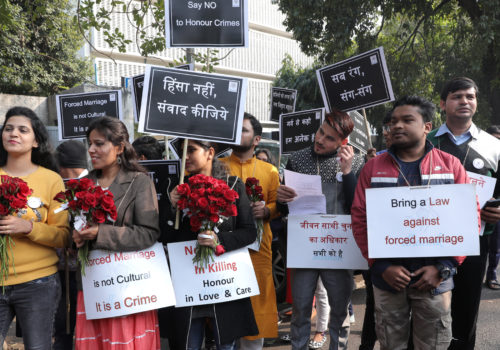KOLKATA — It’s a muggy afternoon in early October when I set about exploring eastern India’s cultural hub. This place seems to live up to its nickname, the “city of joy”: in just a few days, it will host the annual festival of Durga Puja; every street corner is marked by pandals, opulently decorated marquee tents filled with large idols of the Hindu goddess Durga. The recent landslide victory of Mamata Banerjee, the popular leader of West Bengal state (of which Kolkata is the capital), is more cause for celebration. Posters with her image hang everywhere, while supporters proudly walk around waving the tricolor flags of her center-left party, the All-India Trinamool Congress.
Still, some are disgruntled about the state of affairs: “Didi won again, what’s new?” says Arun Kumar Pandey, a migrant from the neighboring state of Bihar. “Didi” (elder sister) is an affectionate nickname for the 66-year-old Banerjee.
Not much has changed in Kolkata since its glory days as Calcutta, India’s capital under the British Indian empire until 1911, when New Delhi took over. Before colonization three centuries ago, all but three steamy villages existed on the banks of the Hooghly River. The city was renamed Kolkata to reflect its original Bengali pronunciation in 2001, five decades after independence. But remnants of the empire remain: In the imperial (and now crumbling) architecture, on the Hooghly, where fishermen moor their boats to fish, and among the 5,000 slums sprawled across the metropolis that host new migrants.
Nevertheless, Banerjee’s election win has revitalized those who feel that West Bengal’s identity as a secular, non-monolithic state is under threat from ascendant Hindu-nationalist sentiment, driven by the dominating Bharatiya Janata Party under Prime Minister Narendra Modi.
The BJP invested heavily in campaigning here this year. Despite Banerjee’s party’s winning the majority vote in a parliamentary election in May, she still lost her local seat to a former protégé. She won it back in a special election in October with a landslide of 60,000 votes.
“She should have won the first time, but at least things are finally back to normal,” a supporter named Binoy Ghosh says.
Ghosh is a mechanic in Kalighat, one of the oldest neighborhoods in south Kolkata, where Banerjee grew up and continues to live in her ancestral terracotta-tiled roof house. Threats to her security have been so high since she first became chief minister in 2011, that state security personnel have pleaded with her to move her elsewhere. She has resisted, reinforcing her popular image as a street fighter. Police now patrol the area instead.
A stone’s throw away from her street is the Kali Temple, a local landmark visited by devotees, tourists and villagers who have lived in the structure’s shadow for generations. Pandas, or religious guides, usher worshippers through the busy small lanes where vendors sell flowers and sweets for temple offerings. Most ignore the signs spelling out social distancing rules, trying to catch a glimpse inside.
This afternoon, a line of local journalists has also formed by the bank of the Adi Ganga River near the temple. Ashis Das, a local politician and member of the state legislative assembly, arrives shortly after. He made headlines earlier in the day for switching parties from the BJP to Trinamool. To mark the occasion, he performs a series of “cleansing rituals” that include shaving his head, taking a dip in the river and chanting to “shun any negativity.”
As cameras roll, most TV reporters stand away from their cameramen, sniggering over the political performance on display. “Let’s be honest, these politicians have no real allegiances,” one reporter for a national broadcaster says, requesting I maintain his anonymity. He’s also referring to the BJP’s dependence on Trinamool defectors in the last election.
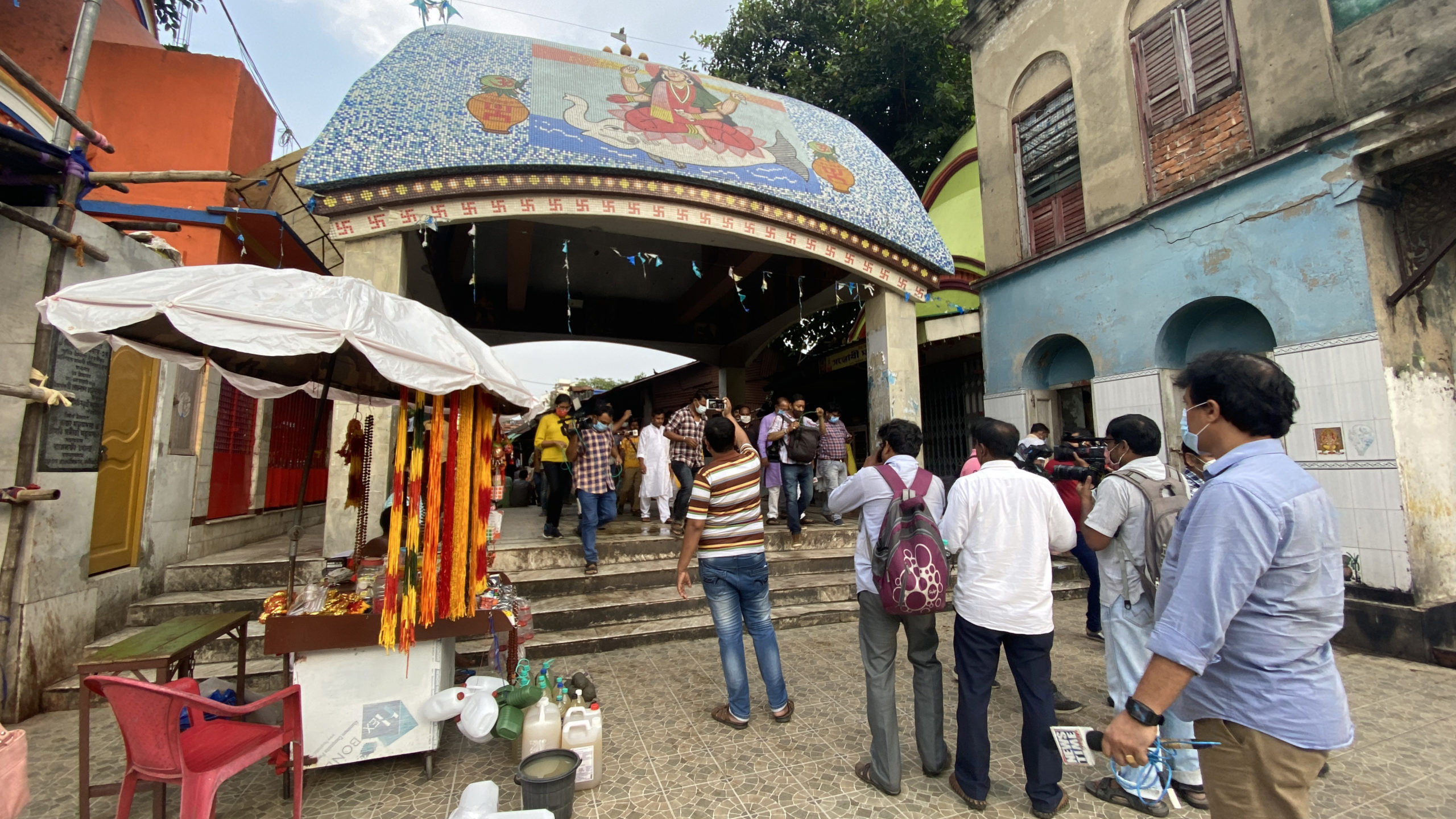
Political success is often sealed by rituals at the temple—almost all politicians in West Bengal, from Banerjee and the governor to her electoral rivals, have come here to seek blessings. It’s rumored that even when Kolkata was under the 34 years of communist rule that preceded Banerjee’s election, leaders who publicly distanced themselves from religion visited at midnight.
So this kind of fanfare is nothing new for Kalighat residents. Boppu and Anju Datta, a couple who run a local tea stall, watch the media frenzy with almost no reaction. They are big supporters of Banerjee: “Mamati di has done so much for the people,” Anju says. Still, they don’t think her party has made a huge difference in their lives, thanks to the steep bribes often made to local leaders to access social welfare. “Every few months, politicians just arrive and create a ruckus here,” Boppu says. “It’s empty promises.”
When Das switched parties from the BJP, he slammed Modi in the media for “selling government properties to private parties,” saying Banerjee’s election win was crucial to the state because “she is Bengali.”
“Being Bengali” holds particular importance in West Bengal, whose people recently began debating whether the state should allow more immigrants from Bangladesh to settle here. From tea stalls to shopping malls, street protests to television networks, discussions about the “infiltration” of Muslims and changing demographics in West Bengal have raged on. Some Bengalis passionately blame newcomers for influencing voting or taking away their jobs; others feel they pose a threat to the region’s distinct Hindu-Bengali identity.
During the elections, the BJP even vowed to prevent the state from turning into “West Bangladesh,” claiming there were “one crore [ten million] Hindu refugees” and “one crore [ten million] infiltrators” in the state. At the same time, Bengali nativists have cautioned against West Bengal turning into “East Bihar,” criticizing an influx of Hindu-speaking migrants, particularly from other states like Bihar and Uttar Pradesh.
“Both sides are using decade-old data and misinterpreting the same to create a volatile political atmosphere,” the political activist Prasenjit Bose wrote.
The neighboring state of Assam has already passed a National Register of Citizens and the Citizenship (Amendment) Act, laws that strip Indian citizenship from Muslims suspected to be illegal immigrants. But the idea that there are more illegal immigrants in northeast India comes from anecdotal evidence, hearsay or misinformation: In the case of West Bengal, numbers from the last census do not corroborate the claims. Today, more outbound migration from the state is taking place.
Mamata Banerjee’s banner hangs in Kalighat, Kolkata
“The rise of Bengali nativism appears to be more of a cultural backlash against the Hindu nationalists’ propaganda on Muslim infiltration than being an impact of inward migration,” says Sabyasachi Basu Ray Chaudhury, a professor of political science at Rabindra Bharati University.
But the data does little to convince voters, so Banerjee maintains her political hold with the slogan “Bangla nijer meyekei chaye,” or “Bengal chooses its own daughter.” Before she took up politics, she worked as a stenographer, tutor, painter, poet and writer. Staking a claim with her Bengali roots, she and her party have labeled the BJP the outsiders, interested in sowing division rather than fostering West Bengal’s rich culture.
That culture is a source of pride for the people of this city, who have long cultivated their own native language, Bengali, through educational, cultural and artistic pursuits. In the late 18th and early 19th centuries, a movement of cultural politics known as the “Bengal renaissance” emerged in the region, where Bengalis became more Europeanized, learned English and shared the intellectual and moral traits of the West as a way to critique them and preserve their own culture.
Indians and outsiders alike began to attach a sense of romanticism to Bengal for being a major center of art and culture: “Bengalis have been known to have paraded the streets of Calcutta defying rain, and perhaps common sense, shouting slogans and exhorting passers-by to ‘read more poetry,’” Binayendra Mohan Chaudhuri writes in the book Indian Literature. What emerged is a rich literary canon, which includes the work of the Nobel laureate poet Rabindranath Tagore, that has been translated into many different languages around the world. The Indian leader Gopal Krishna Gokhale, once remarked, “What Bengal thinks today, India thinks tomorrow.”
Fears about a recent decline in Bengali language and arts have been attributed to the infiltration of outsiders. But as the prominent Bengali journalist Soutik Biswas once wrote in Outlook magazine, the decline has more to do with “the falling quality of its practitioners… and an abysmal educational system where none of the languages are taught properly by errant and politicized teachers.”
Even Modi, whose party promised a strict crackdown on Muslim immigrants to Bengali voters, acknowledged in the last election that this hostility toward outsiders runs counter to what Bengal’s high-brow culture usually advocates. Launching into thickly accented Bengali at a campaign event, he mocked Banerjee: “Didi, o Mamata didi. You say we are outsiders, but the land of Bengal doesn’t regard anyone as an outsider.”
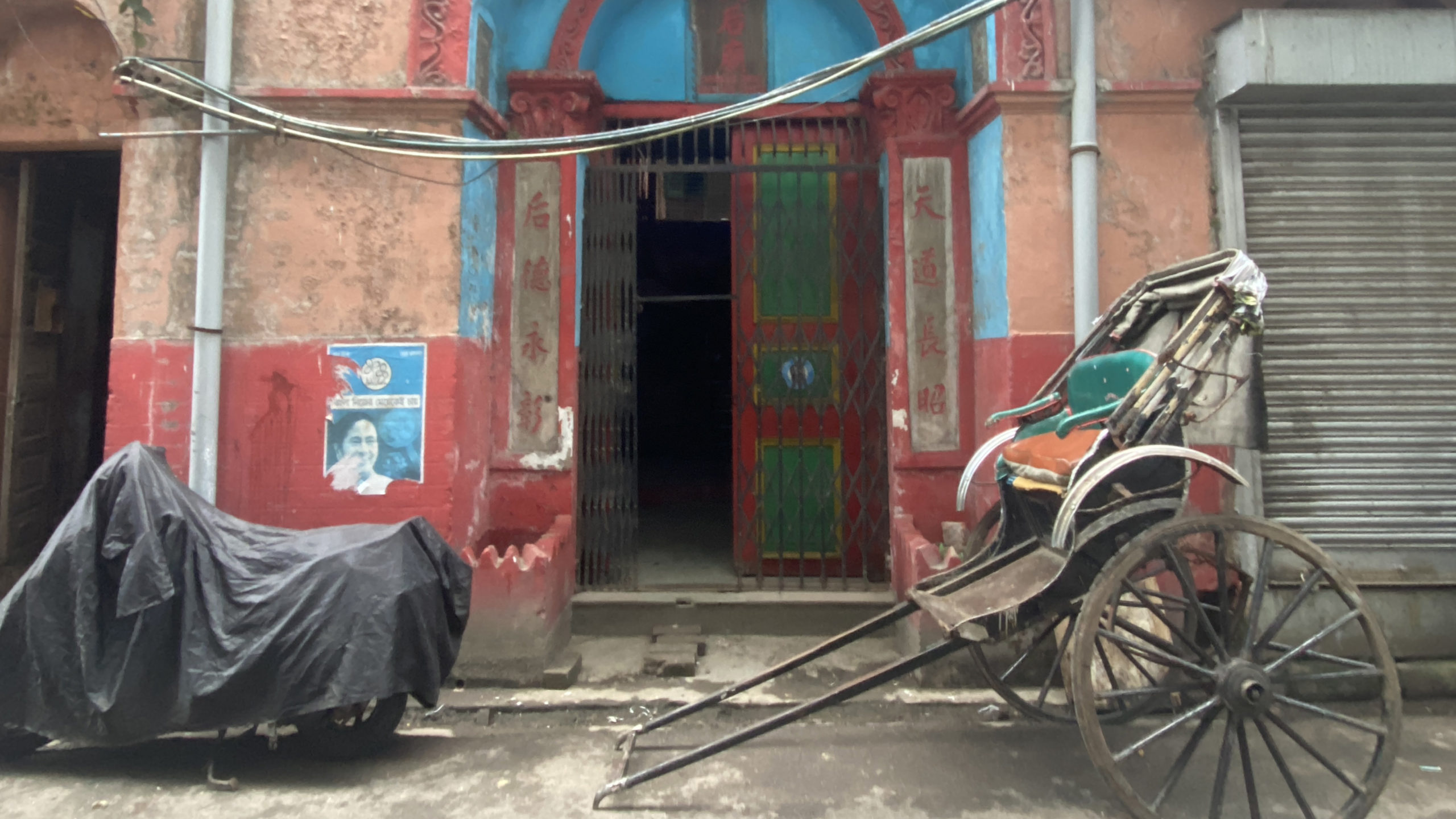
This sentiment rings true as I end my tour in Tiretta Bazar, one of two Chinatowns in Kolkata. This is the older of the two, known as the spiritual hub for the city’s Chinese community since the late 18th century. At some point, the Chinese immigrant population in the city, made up of Hakka and Cantonese communities, was 20,000 strong. Now, it has dwindled to about 2,000. The neighborhood has become an amalgamation of Chinese and Muslim residents who run Chinese restaurants next to Halal meat shops.
On Blackburn Lane, marked with street signs in Chinese and Bengali, I enter a 110-year-old dormitory built for Chinese workers. It’s now a Chinese restaurant run by a Tao Church known as the Voiling Club. There James Lee, who helps run the restaurant as the club’s secretary, reminisces about how the lane once functioned as a social space, with elders playing mahjong and children perched on their balconies watching the dragon dance on Chinese New Year’s. “We still run our church and a small club here, but things have changed a lot,” he says.
The Cantonese community settled in West Bengal during British India and chiefly worked as carpenters. After the Sino-Indian conflict of 1962, when skirmishes between India and China occurred over a disputed Himalayan border after India granted asylum to the Dalai Lama, many lost their jobs and were forced to emigrate elsewhere or return to China. Those who stayed in India were issued a registration certificate under a new regime that forced them to renew their temporary status every year. Many are effectively stateless even today, facing difficulty gaining permanent Indian citizenship, Lee says.
The pandemic has once again forced a new reckoning with their Chinese identity, Lee says, as some residents experience discrimination for “bringing Covid” to India. He adds that some of the older Chinese residents have always experienced a sense of being in limbo, despite living in India all their lives.
Still, Lee remains in Tiretta Bazaar together with a handful of Chinese families. He just couldn’t bring himself to leave: “Where would I go? Calcutta is my home.”

